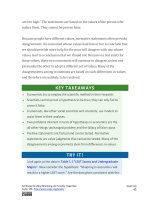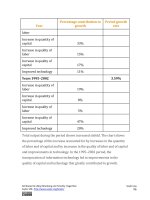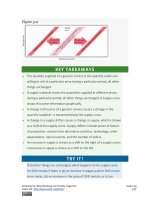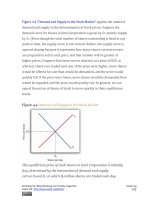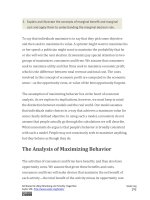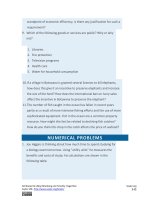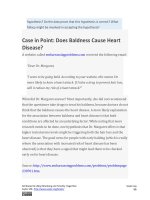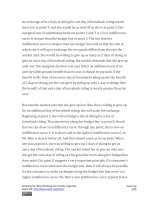Authors libby rittenberg 691
Bạn đang xem bản rút gọn của tài liệu. Xem và tải ngay bản đầy đủ của tài liệu tại đây (496.49 KB, 1 trang )
Suppose Carol Stein is considering the purchase of a new $95,000 tractor
for her farm. Ms. Stein expects to use the tractor for five years and then sell
it; she expects that it will sell for $22,000 at the end of the five-year period.
She has the $95,000 on hand now; her alternative to purchasing the tractor
could be to put $95,000 in a bond account earning 7% annual interest.
Ms. Stein expects that the tractor will bring in additional annual revenue of
$50,000 but will cost $30,000 per year to operate, for net revenue of
$20,000 annually. For simplicity, we shall suppose that this net revenue
accrues at the end of each year.
Should she buy the tractor? We can answer this question by computing the
tractor’snet present value (<em class="emphasis">NPV), which is equal to the present value of all the revenues expected
from an asset minus the present value of all the costs associated with it.
We thus measure the difference between the present value of marginal
revenue products and the present value of marginal factor costs. If NPV is
greater than zero, purchase of the asset will increase the profitability of the
firm. A negative NPV implies that the funds for the asset would yield a
higher return if used to purchase an interest-bearing asset. A firm will
maximize profits by acquiring additional capital up to the point that the
present value of capital’s marginal revenue product equals the present
value of marginal factor cost.
If the revenues generated by an asset in period n equal Rn and the costs in
period n equal Cn, then the net present value NPV0 of an asset expected to
last for n years is:
Equation 13.5
NPV0=R0−C0+R1−C1 +...+Rn−Cn
1+r
(1+r)n
Attributed to Libby Rittenberg and Timothy Tregarthen
Saylor URL: />
Saylor.org
691
